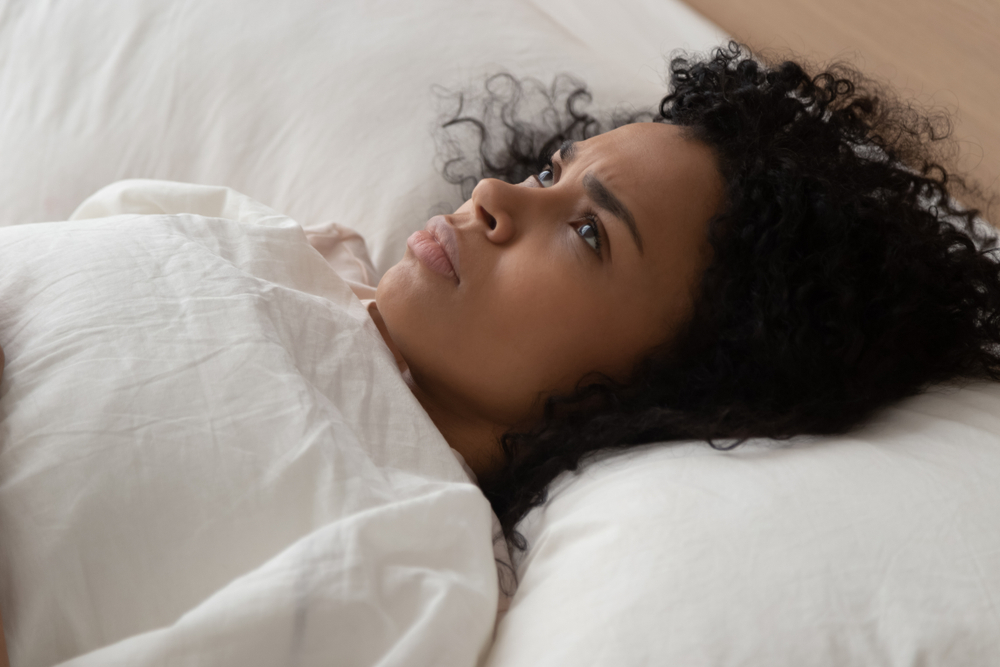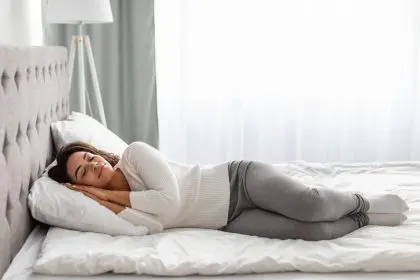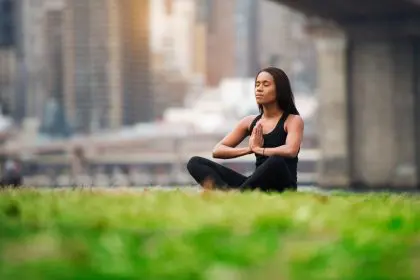In an era where smartphones buzz with notifications until midnight and work emails arrive at all hours, achieving mental stillness before sleep has become a modern challenge. The constant stimulation of digital life leaves many people struggling to quiet their thoughts when their heads hit the pillow, leading to restless nights and groggy mornings.
Sleep researchers have identified specific techniques that can help transform those anxious evening hours into periods of genuine rest and recovery. These evidence-based methods work by targeting the underlying mechanisms that keep minds active when bodies are ready for sleep.
Understanding the evening brain
The human brain doesn’t simply switch off when darkness falls. Instead, it requires a gradual transition from the alert, problem-solving mode necessary for daytime activities to the relaxed state that promotes deep sleep. This transition becomes increasingly difficult when modern life blurs the boundaries between work and rest.
Neuroscientists have discovered that the brain’s default mode network, which remains active during rest, can become hyperactive in people experiencing stress or anxiety. This heightened activity manifests as the racing thoughts that plague many people at bedtime. The key to calming this mental chatter lies in redirecting the brain’s attention through specific practices.
Strategic breathing for mental quiet
Controlled breathing techniques represent one of the most immediate tools for calming pre-sleep anxiety. The 4-7-8 breathing method, developed by integrative medicine practitioners, involves inhaling for four counts, holding the breath for seven counts, and exhaling for eight counts. This pattern activates the parasympathetic nervous system, which governs the body’s rest-and-digest response.
Research published in sleep medicine journals shows that structured breathing exercises can reduce cortisol levels within minutes. The technique works by engaging the vagus nerve, which connects the brain to major organs and helps regulate stress responses. Regular practice of these breathing patterns can create lasting changes in how the nervous system responds to evening stress.
Box breathing, another effective technique, involves equal counts for inhaling, holding, exhaling, and holding again. This method, used by military personnel and emergency responders, helps establish a rhythm that naturally slows heart rate and blood pressure.
Digital detox strategies
Creating technology boundaries has become essential for evening mental health. The blue light emitted by screens suppresses melatonin production, but the content consumed through devices poses an equally significant challenge to mental calm. News updates, social media scrolling, and work communications can trigger stress responses that persist long after devices are set aside.
Sleep specialists recommend implementing a digital sunset routine, where all screens are turned off at least one hour before intended bedtime. This practice allows the brain to begin its natural wind-down process without the interruption of stimulating content.
For those who find complete digital abstinence challenging, experts suggest using blue light filters and switching to audio content rather than visual media. Podcasts, audiobooks, or calming music can provide gentle mental engagement without the alerting effects of bright screens.
Physical relaxation methods
Progressive muscle relaxation addresses the connection between physical tension and mental restlessness. This technique involves systematically tensing and releasing muscle groups throughout the body, starting with the toes and moving upward. The practice helps identify areas of unconscious tension while promoting overall physical calm.
Studies in behavioral sleep medicine demonstrate that regular progressive muscle relaxation can reduce the time it takes to fall asleep by an average of 15 minutes. The technique works by increasing body awareness and creating a physical anchor for mental attention.
Gentle stretching routines can also prepare the body for rest. Simple movements like neck rolls, shoulder shrugs, and forward folds help release the physical manifestations of daily stress. These movements signal to the nervous system that the active phase of the day has ended.
Mental decluttering practices
Worry journaling provides a structured approach to managing anxious thoughts. This practice involves writing down specific concerns along with potential solutions or action steps for the following day. The act of transferring worries from mind to paper creates psychological distance from anxiety-provoking thoughts.
Sleep researchers have found that people who engage in expressive writing before bed report fewer intrusive thoughts during sleep onset. The technique works by providing closure to the day’s concerns and creating a sense of preparedness for tomorrow’s challenges.
Gratitude reflection offers another pathway to mental calm. Focusing attention on positive aspects of the day shifts brain activity away from problem-solving networks toward areas associated with contentment and peace. This practice doesn’t require elaborate journaling; even mentally noting three positive moments from the day can be effective.
Environmental optimization
Creating a sleep sanctuary involves more than comfortable bedding. Temperature regulation plays a crucial role in sleep preparation, with optimal bedroom temperatures ranging between 65 and 68 degrees Fahrenheit. Cool environments support the natural drop in core body temperature that occurs during sleep onset.
Sound management can significantly impact mental calm. White noise machines, earplugs, or even the gentle hum of a fan can mask disruptive sounds while creating a consistent auditory environment. Some people benefit from nature sounds or soft instrumental music, while others prefer complete silence.
Aromatherapy applications leverage the direct connection between the olfactory system and brain regions that regulate emotion and relaxation. Lavender essential oil has the strongest research support for promoting sleep, though chamomile, bergamot, and sandalwood also show promise in reducing evening anxiety.
Building lasting habits
The most effective evening calm strategies are those that become automatic through consistent practice. Sleep specialists recommend starting with one or two techniques rather than attempting to implement multiple changes simultaneously. This gradual approach allows new habits to integrate naturally into existing routines.
Success in calming the racing mind requires patience and experimentation. What works for one person may not be effective for another, making it important to try different combinations of techniques until finding the right fit. The investment in developing these practices pays dividends in improved sleep quality, better daytime energy, and enhanced overall well-being.
The path to peaceful evenings represents a return to more natural rhythms of rest and activity. By implementing these evidence-based strategies, it becomes possible to reclaim the precious hours before sleep as a time of genuine restoration rather than continued mental stimulation.












